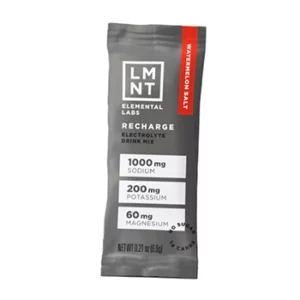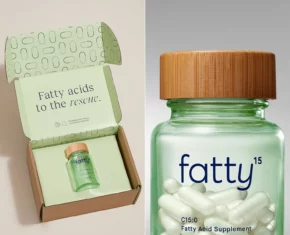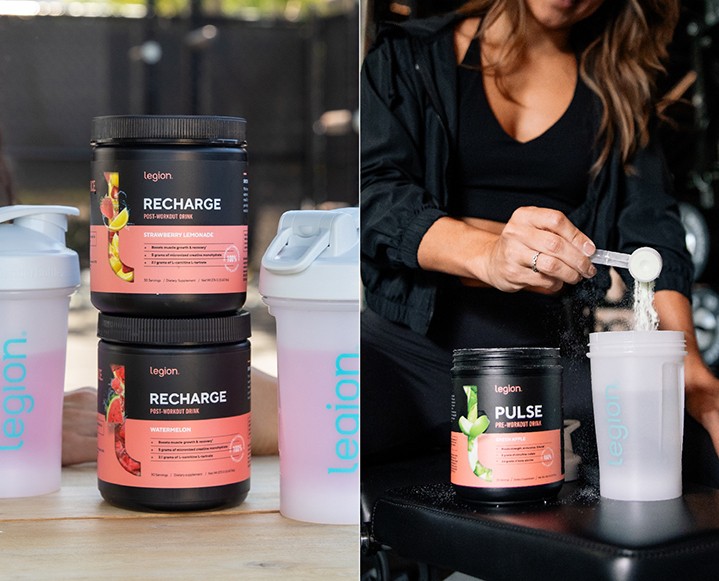Reducing chronic inflammation in the body by way of eating delicious, nutrient-dense foods sound like a dream, but the benefits are as real as it gets. Integrative nutritionist, Jennie Miremadi, can attest to the potent healing potential of an anti-inflammatory diet like this one — but how do you know you’re doing it right? These simple guidelines will help you harness the power of anti-inflammatory eating like a pro…
Inflammation is a healthy response by your immune system that helps your body heal from injury and fight off pathogens like viruses and bacteria. Inflammation becomes harmful when your immune system is triggered into a state of chronic inflammation that runs rampant in your body. In fact, chronic inflammation is at the root of most chronic health conditions — and, food is one of the most common triggers of inflammation.
As a nutritionist with an anti-inflammatory approach, I work with clients to help them reduce chronic inflammation in the body. If you’re wondering what inflammation is and why you might want to try an anti-inflammatory diet, here is some helpful information.
Is There A Food-Inflammation Connection?To understand the food-inflammation connection, we look to the gut which has proteins called tight junctions that bind the cells of your gut wall together so that food particles and other substances don’t leak through. When you eat food that damages your gut lining, those tight junctions open and enable food particles and other substances to leak through, causing intestinal permeability or leaky gut. This is a problem because the immune cells located just beneath your gut wall identify the food particles as harmful foreign invaders and begin reacting to them. As a consequence, you’re left with chronic inflammation, food sensitivities and many resulting symptoms.
Food sensitivity symptoms can manifest anywhere from hours to days after you eat a problem food and can include: skin rashes, acne, excess sweating, hives, fatigue, headaches, migraines, gastrointestinal symptoms, mood issues, asthma, weight management issues, bloating, water retention, muscle pain, joint pain, sinus problems and runny nose, among others.
What Are Considered Anti-Inflammatory Foods?The best way to combat food-induced inflammation is by adopting an anti-inflammatory diet. On an anti-inflammatory diet, you eat real, whole foods and incorporate anti-inflammatory foods, including:
ginger
turmeric
rosemary
wild Alaskan salmon
oregano
green tea
berries
cacao
cinnamon
garlic
extra-virgin olive oil
flax seeds
tart cherry juice
walnuts
olives
vegetables
*especially dark, leafy greens and cruciferous vegetables
Now Tell Me About The Elimination Diet…When starting an anti-inflammatory diet, an elimination diet is considered the gold standard for helping figure out which foods are inflammatory for your particular system. During an elimination diet, you remove foods that are common inflammatory triggers for a large percentage of the population, such as:
gluten
dairy
soy
corn
eggs
sugar
refined vegetable oils
trans fats
artificial foods
processed foods
fried foods
foods cooked at high heat
refined carbs
nightshades*
*such as tomatoes, bell peppers, eggplant, potatoes and hot peppers, among others
Then, after eliminating these foods for a set period of time, you begin to reintroduce some of them one by one to test which may be causing food sensitivity symptoms (see below for more specifics). Keep in mind that if you reduce inflammation and support your gut, in three to six months you can retest a food that you initially reacted to. You may find you do not have any symptoms.
How Do I Start The Anti-Inflammatory Diet?If you’re feeling inspired to eat this way, it’s important to set yourself up for success. Even if you understand the basics of the anti-inflammatory diet, it’s easy to get tripped up when you’re trying it in real life. You should feel empowered to successfully implement the anti-inflammatory diet in your life and stick with it long term.
Here are the most common mistakes that people make when starting an anti-inflammatory diet and how to avoid them:
using the elimination diet permanently | Sometimes people feel so amazing during an elimination diet they want to skip the testing component and just stay on the elimination diet forever. But the purpose of an elimination diet is to temporarily restrict certain foods so you can identify which of those foods are inflammatory — it’s not to permanently restrict healthy foods from your diet that aren’t causing food sensitivity symptoms. People also often remain on an elimination diet indefinitely because they don’t know what to reintroduce and so they don’t test anything at all. To help you figure out what to test and what not to, here’s the cheat sheet:
+ There are plenty of nutrient-rich foods that you remove on an elimination diet such as eggs, bell peppers, eggplant and tomatoes — but these foods are a great addition to your diet if they don’t cause food sensitivity symptoms. Test these foods.
+ Foods with no nutritional value like artificial foods, processed foods and refined carbs are best left out of your diet. You don’t need to test these foods.
+ Although whole food-based, leave gluten-containing grains out of your diet, even if you don’t experience food sensitivity symptoms when you eat them. The reason is that gluten can trigger the release of zonulin, a protein that opens up those tight junctions that bind the cells in the lining of your gut, causing leaky gut.
+ Most people feel better leaving dairy out of their diet. However, if you’d like to try adding dairy back in, test it. If you’re able to consume dairy without experiencing any symptoms, eat it sparingly and make sure that you choose organic, grass-fed sources that are ethically and humanely produced.
You can also try testing soy and corn, but keep this in mind:
+ Make sure you choose organic to avoid exposure to genetically modified sources, which have been engineered to be resistant to the highly toxic herbicide glyphosate.
+ If you’re going to eat soy, choose fermented sources (like natto and tempeh) and steer clear of the processed versions found in packaged foods.
Eating organic, gluten-free, vegan-refined carbs | When you start an anti-inflammatory diet and look for swaps for the foods you used to eat, it might be tempting to eat lots of organic, gluten-free and vegan refined carbs such as cookies, chips, pretzels and crackers. But labels like “organic” “gluten-free” and “vegan” don’t make any food inherently healthy, and foods with these labels can still be and often are inflammatory.
For example, an organic, gluten-free vegan hot dog bun made from refined flour is totally devoid of nutrients and will still trigger inflammation and spike your blood sugar, even if it’s organic and made without gluten or dairy. So, when making substitutions, avoid refined carbs and instead aim to choose swaps made from whole food ingredients.
Adopting a diet mentality | If you only plan to stay on an anti-inflammatory diet until you reach a particular goal, like losing five pounds for example, and then revert to how you ate before, you are defeating the whole purpose of eating this way. Ditch the diet mentality and instead look at this anti-inflammatory nutritional approach as one of the most important lifestyle changes you’ll ever make to elevate your health long term. Then, to enable yourself to actually stick with it, focus on finding healthy, delicious ingredient and recipe replacements to take the place of the inflammatory foods you used to eat.
Not honoring you | Don’t let overwhelm prevent you from changing your diet. If it feels too daunting to fully adopt an anti-inflammatory diet right now, ask yourself what would be feasible and start there. In other words, pick one change you feel you’re ready to make and commit to integrating it in your life. Once it feels sustainable and effortless — whether it’s one day, week or month from now — pick another. Then another. Then another. Before you know it, you will have totally transformed the way you eat, and you will have done it at a pace that was right for you.
believing anti-inflammatory foods cancel out inflammatory foods | Take as much time as you need to transition to an anti-inflammatory diet while keeping in mind that anti-inflammatory foods can’t cancel the impact that inflammatory foods have on your body. So, if you’re still eating cheeseburgers and French fries for lunch and dinner, that fish oil supplement and sprinkle of flax seeds on your breakfast — while a great start — won’t help you escape food-induced inflammation.
To truly reap the benefits of an anti-inflammatory diet you have to remove the foods that cause inflammation while simultaneously incorporating nutrient-rich, anti-inflammatory foods. So, make this your ultimate goal while transitioning at a pace that works for you so you don’t feel frustrated and give up. You can do it!
The Chalkboard Mag and its materials are not intended to treat, diagnose, cure or prevent any disease. All material on The Chalkboard Mag is provided for educational purposes only. Always seek the advice of your physician or another qualified healthcare provider for any questions you have regarding a medical condition, and before undertaking any diet, exercise or other health-related programs.















